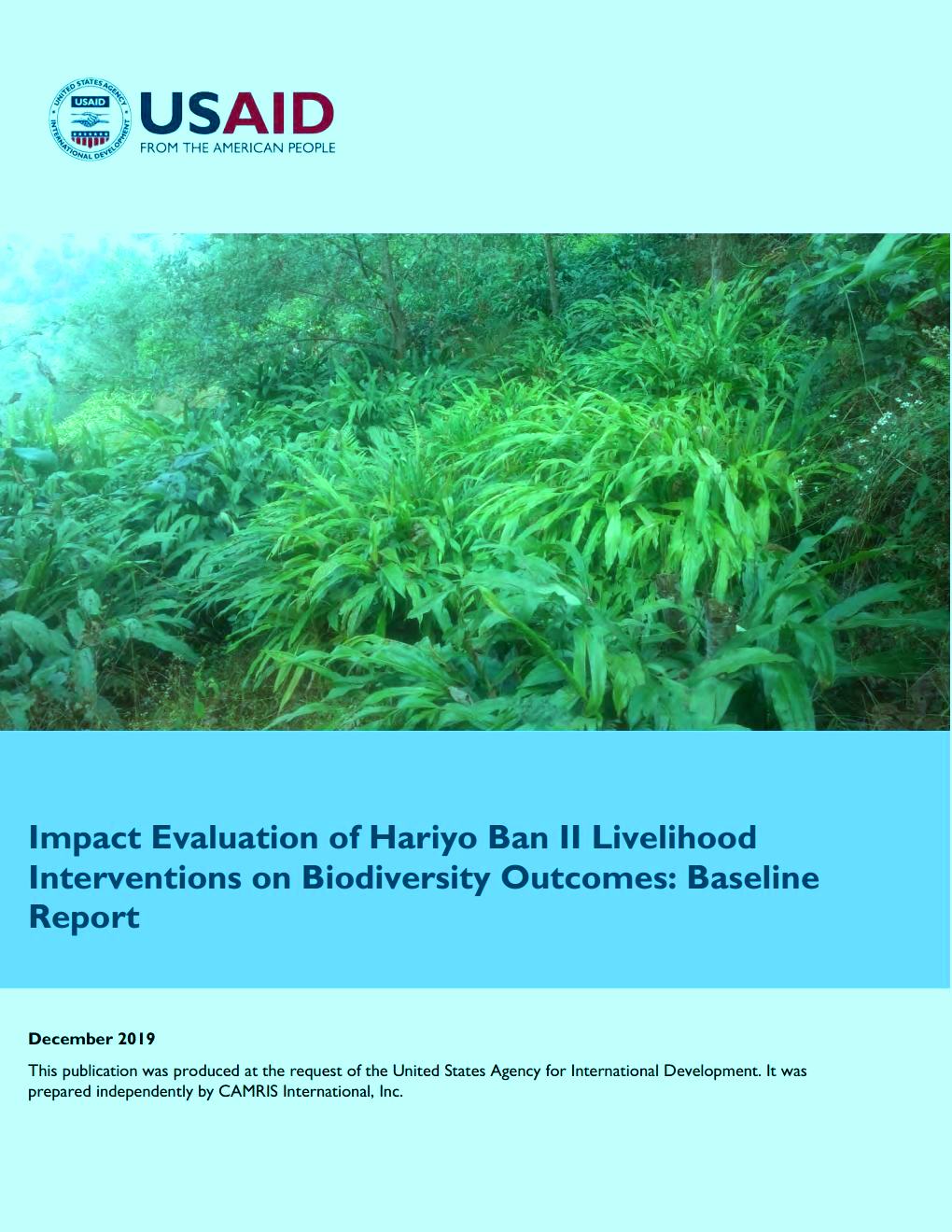Hariyo Ban II project is a USAID supported five year (2016 – 2021) project under the natural resources management and climate change sector. The overall goal of the project is to reduce adverse impacts of climate change and threats to biodiversity in Nepal. The project was implemented in two nationally important biodiverse landscapes: Chitwan – Annapurna Landscape (CHAL) and Terai Arc Landscape (TAL). The purpose of this evaluation was to test the theory of change that assumes a link between livelihood interventions and improved biodiversity outcomes.
Report Type: Forestry
Improving Livelihoods and Equity in Community Forestry in Nepal: the Role of Adaptive Collaborative Management
This was the second phase project of ‘Adaptive Collaborative Management (ACM) in Community Forestry in
Nepal’ implemented in Kaski and Sankhuwasabha districts from 2004-2007. The main objective of the project
was to enhance the livelihood security of the rural people, especially the poorest and the most marginalized,
through enhancement of productive resources and sustainable management and governance of community
forest user groups. The outcome of this project can be seen in the improvement of various skills in documenting,
expressing views, networking and alliance making, such as the Non-Timer Forest Product (NTFP) network which
developed in SSB district has now started managing a small enterprise there. A VDC-level network has also
continued in the Bamdibhir CFUG of Kaski district. This research has increased the trust, communication and
relationship of CFUG with other stakeholders, and the attitude of the people towards equity in benefit sharing
(providing benefits to the poor and marginalized people) have been positive.
Adaptive and Collaborative Management (ACM) in Community Forestry in Nepal
CIFOR’s ACM research in Nepal was a part of ‘Adaptive Collaborative Management (ACM) in Community Forestry research being coordinated by CIFOR in various countries in Asia and Africa including Nepal, Indonesia, the Philippines, Ghana, Cameroon, Zimbabwe and Malawi. This Nepal chapter ACM project was implemented in collaboration with CIFOR, Forest Action and NORMs. The objective of this project was to identify, enhance and develop a set of institutional arrangements, approaches/strategies and tools, and their enabling conditions, to allow local communities to achieve more sustainable and equitable forest management and greater well-being in a multistakeholder environment. The project has yielded a number of outputs including a Site Reconnaissance Report, Stakeholder Analysis Report, a Historical Trend Report, Background Report on Community Forestry Situation, BioPhysical Assessment Report, Human Well-being Report, Adaptation and Collaboration Report, Annual Analysis Report and Evaluation Report. (Please click for full document)
Forest Based Micro-Enterprise Component of Environment and Forest Enterprise Activities (EFEA)
The Forest-based Micro-enterprise (FBME) component of the Environment and Forest Enterprise Activities
(EFEA) Project, while assisting in the development of community forestry, takes steps to create forest-based
micro-enterprises for the purpose of increasing rural incomes through the sustainable use of natural resources.
The EFEA project aims to increase the sale of high-value forest products and enhance the level of women’s
participation in managing and controlling resources. New ERA, in collaboration with the Bio-diversity Support
Program USA, implemented the FBME project in Dang, Pyuthan, Rolpa, Salyan, Rukum, Bardiya, Banke and
Dolpa districts in the Mid-Western Development Region of Nepal. The main objective of the project is to support
local communities to establish NTFP based micro-enterprises. The project strategy is to equip project partners
and local communities with new information for sustainable forest-based micro-enterprises
A Study on Non-Timber Forest Products (NTFP) of Bagmati Integrated Watershed Management Program
The purpose of this study is assess the availability of valuable NTFPs and look at possible income generating activities based on locally available NTFPs. The study identifies the important NTFPs in the project area, their mode of collection and uses. The study makes recommendations in relation to the potential for sustainable utilization of NTFPs, their conservation value and their potential to generate additional income for the resource poor.



